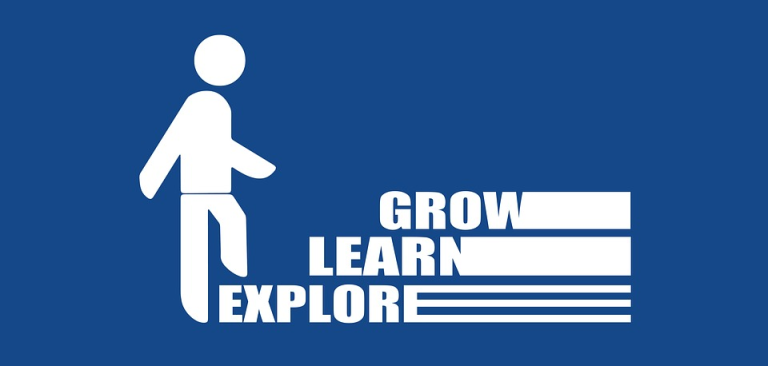
âDonât just assume a student is lazy or just doesnât care about what they are learning. They might understand the content you are teaching just not how to express themselves,â says Uswai Husna, education major at Brooklyn College and America Needs You member. Husna should know. As a child, Husna moved back and forth between the United States, ultimately settling here in 2012, and Marsad, Pakistanâa place of sanctuary for Afghani refugees fleeing the Taliban.
Despite today being a confident and erudite young woman in English, it still took Husna five years to feel comfortable using English as a medium to express herself. Husna, a former English language learner (ELL) and student with interrupted formal education (SIFE), cites the relationship that she developed with her former teacher, Michelle Ortiz (quoted later in this article), as being an instrumental factor in her ultimate success as well as going to a middle school with a large international student body that had similar backgrounds and experiences to that of Husna.
Husnaâs story is not unique. New York City, alone, is integrating more than 7,000 students from migrant families into classrooms this school year (22-23) with some of these students also making up the 61,000 people in the New York City shelter system.
Like in New York City, educators, city officials, and non-profits around the country are scrambling to support the literacy needs of newly arrived English language learners. They also must concurrently address the social-emotional needs of the approximately 10% to 20% of newly arrived ELLs arriving as SIFE students. While the majority of ELLs are not coming from a situation where their education has been interrupted, those who are can present even greater teaching challenges for educators not accustomed to teaching newly arrived ELLs.
What Advocates Say We Must Do To Support The Needs Of These Children

Fen Chou
Program Director, Council of Chief State School Officers
Ensuring meaningful participation of English learnersâwho represent 10% (or 5.1 million students) of the total K-12 student population and have diverse linguistic, cultural, and academic backgroundsâis a core concern in the delivery of K-12 public education across the country. At the start of their educational experience in the United States, these students face the challenge of learning English so they can fully access academic content. They need specific supports and services from schools for success. The Council of Chief State School Officers (CCSSO) is committed to supporting state education agencies as they work with districts and schools to ensure English learners get the best possible educational opportunities and graduate from high school on time, prepared for college and careers.
In the past three years, the COVID-19 pandemic compelled state leaders to develop new instructional delivery models and support teachers, students, and families as they shifted from in-person to remote and hybrid learning environments. These shifts have presented many challenges to educational equity, especially for English learners and their families, who have been disproportionately impacted by the pandemic.
However, these disruptions to school also presented an opportunity. We encourage states to integrate technology in new ways, revisit their programs and services for English learners and families, monitor the effectiveness of English learner programs, and provide educators with a chance to ensure that they are supporting access and equity for English learners. Specific recommendations are provided in CCSSOâs State Leadership Guide to help state education agency leaders engage stakeholders in continuous-improvement processes focused on English learner programs and services.
Amber Crowell Kelleher
Executive Director, TESOL International Association
TESOL International Association values and fosters diverse and inclusive participation within the field of English language teaching. For more than 50 years, TESOL has globally promoted equitable representation of, engagement of, inclusion of, and access to multilingual learners of English (MLE). We do this with the support of more than 150,000 educators in more than 160 countries. Simply put, TESOL advances linguistic expertise in multilingual contexts through professional learning, research, standards, and advocacy.
We strongly support and advocate for asset-based approaches for MLEs that serve the learners and their families. Regardless of the language learning context, learning an additional language starts with a studentâs culture and heritage or home language. In particular, refugees and asylees, who may have limited or interrupted formal education and may be unfamiliar with U.S. social and academic cultural norms, benefit from an asset-based approach that values and draws from their home language and culture. Home language supports, such as encouragement in translanguaging and offering multiple ways for students to share their knowledge, can empower newcomer MLEs. Such students may also benefit from specialized supports that include trauma-informed instruction and social-emotional and mental health supports. Teachers can also help establish a safe space by teaching MLEs the vocabulary to express their emotional state, such as anger, sadness, fear, or frustration.
When U.S. Secretary of Education Miguel Cardona referred to being bilingual as a superpower, he not only highlighted multilingual learning but also elevated the voices of MLEs, their families, their communities, and their collective experiences and stories. What students and their families bring to the learning process from their home language and culture serves as an asset to the student, their teachers, and the larger context of learning.
Tim Boals
Executive Director, WIDA
I believe teachers like to see all their students thrive. This is why they teach. Nonetheless, myths about language learning, the role of culture or home languages, or about the need for language or content remediation and what that involves persist, and often get in the way of creating and sustaining real opportunities for multilingual learners to learn.
Lately, some politicians and commentators suggest that schools should push equal opportunity but not equity. Equity is bad, they say, because it implies that we want students to all be the same. I disagree. The notion of equity for multilingual learners can be traced to Lau vs. Nichols (1974) where the U.S. Supreme Court ruled that giving multilingual learners equal treatment in the same classroom was not, in fact, equal, because without proper support multilingual learners would not understand the same lesson as the English speakers or proficient English readers would. Equity, in this context, is akin to getting the correct eyeglasses. We all need a different prescription to have an equal opportunity to see clearly. If we follow that analogy in the case of multilingual learners, we must provide them equity in the classroom through support that acknowledges where they are on the continuum of learning English, as well as how their home languages, cultures, and individual identities can be used as assets.
For a beginner to intermediate English learner, we need to modify or scaffold the English language and literacy demands of those programs. Even students at more advanced levels of English proficiency often need some targeted support. This is what we mean by equity. There are numerous ways to do that, but we know traditional high school lectures and assignments in unsupported English wonât get us there.
Always encourage educators to maintain a can-do lens when thinking about these students. This can be accomplished by considering the cultural and linguistic assets students bring to class and building upon those assets. Consider how the can-do lens helps value and support studentsâ home languages and cultures to the maximum extent possible. Home and community language and culture are a big part of studentsâ assets and identities, and we need to nurture and build upon them. Emphasize how can-do also means to not over-emphasize grammatical correctness. Students do need targeted feedback on their progress when learning English, but this should be done strategicallyâsince making mistakes is part of learning and we should help them understand that. Otherwise, while comparing themselves with others, they will feel they cannot successfully take on those academic identities or roles.
Promote learning about how to hold and maintain academic conversations. This is a skill worth teaching and practicing. It is far more effective than traditional question-and-answer techniques found in many classrooms. Accelerate content learning, rather than focusing on language remediation. Foster collaboration between language support teachers and content or classroom teachers. Involve, engage, and empower families to participate in and better understand their childrenâs educational path. Encourage extra-curricular activities and participation in the arts, in and outside of school.
Developing Lessons That Support Newly Arrived ELLs Â

So, on a practical level then, what should educators do to support multilingual learners? Michelle Ortiz, ENL Coordinator in the NYCDOE and adjunct professor at Brooklyn College, suggests the following:
One strategy that I recommend to teachers who have various levels of ELLs in their class is to first draft their lesson without differentiation. Then, go back into the lesson and ask, “How can I provide an entry point for my entering and emerging level students?” If they arenât sure, I recommend applying some general best practices for students at this level. This includes adding visuals to slides, translating essential vocabulary words, and allowing students to discuss the content in their native language. For example, during a gallery walk activity, allow students to discuss the images and write notes in their language. This provides an entry point for students to access the lesson by using visuals and research shows strong correlations to academic success when ELLs utilize their first language.
When ELLs are at the transitioning and expanding level, teachers need to keep in mind that students at this level have a strong command of social English, but often struggle with academic reading and writing. Research shows that it can take five to seven years for students to acquire and apply academic language. As a result, teachers can differentiate their lessons to ensure students can build upon their reading and writing skills. Teachers can scaffold complex texts by using close reading strategies along with targeting academic vocabulary. Students may often continue to lack essential background knowledge to comprehend a text, especially if varying cultural norms are found within the text. Therefore, strategies such as using a pre-reading assessment and surveys will help to assess knowledge and provide a focus for teaching background knowledge. Teachers should also consider using graphic organizers, jigsaw activities, and creating leveled notes and outlines to support their students as they build upon their reading and writing skills.
In supporting newly arrived ELLs, who are also SIFE, here is what Judith OâLoughlin and Brenda Custodio, co-authors of Students with Interrupted Formal Education: Bridging Where They Are and What They Need by Corwin Press (2017), say are some surefire strategies:
SIFE (Students with Interrupted Formal Education), by definition, have experienced gaps in their formal first-language education. They need to be supported by language and content educators who understand their situation and are willing to provide extra academic, as well as social and emotional supports to assist them and help fill in those gaps. Students who have experienced trauma need supports, such as consistent routines in the classroom that help them feel comfortable and safe. Writing assignments on the board in print, not cursive, and providing models or several examples of assignment expectations at their level of learning, ensures that students understand what is expected, eliminating panic and confusion. Permitting students to use their first language for support in bilingual classes or using translanguaging in content classes may be critical. At times, peer assistance or a âbuddyâ may be needed. For students with extremely limited previous education, extra classes to build basic literacy and numeracy skills may be necessary. For too many secondary students, the lowest math available is algebra and SIFE may not have the foundational math skills or foundational knowledge to be successful in mathematics. And finally, it is important that modifications, addressing their current support needs, but also changing as SIFE become more proficient academically, should be provided for students with academic gaps while their literacy and content knowledge develop.
John Schembari is a school improvement coach. If you would like additional ideas on how to impact student lives without sacrificing your own, and have a life teaching, check out his quick hack teaching courses here. You can also reach out to him on LinkedIn.









































